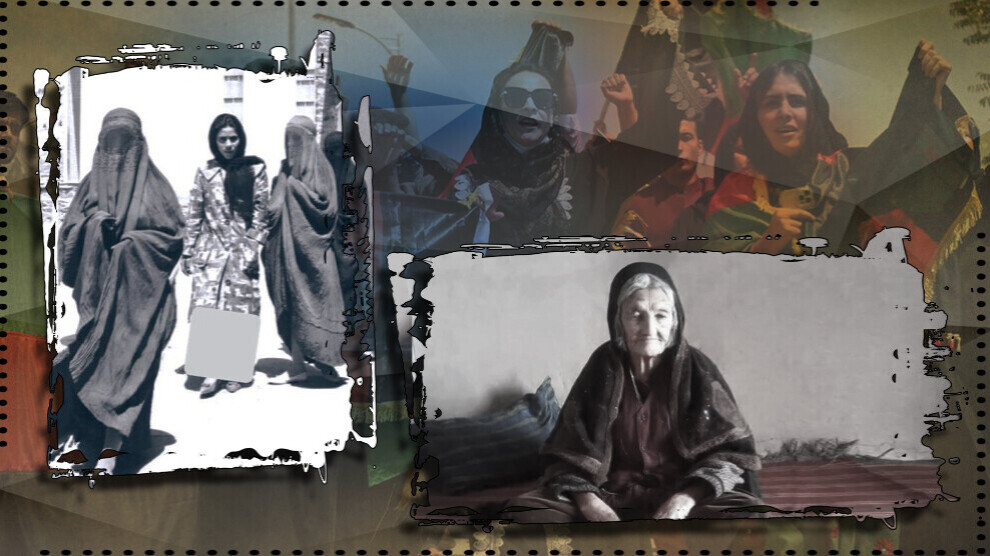History of Afghan women’s role in art and literature-Part 4
Newton's third law of motion states that “every action has an equal and opposite reaction”. The more a government oppresses people, the more women and men rise up.

BAHARIN LEHIB
Kabul - The history of Afghanistan is filled with pain and violence. Understanding the true nature of the ruling regimes, we can feel their autocracy, anti-human and anti-woman ideas with all our heart.
Habibullah Kalakani, also known by his nickname "Bacha-ye Saqao”, was the ruler of Afghanistan from January 17 to October 13, 1929. During the Afghan Civil War (1928–1929), he defeated Amanullah Khan and several months later, he was defeated by Mohammed Nadir Shah. Mohammed Nadir Shah captured Habibullah Kalakani and executed him by firing squad November 1, 1929. Mohammed Nadir Shah quickly abolished most of Amanullah Khan's reforms. He was shot dead during a graduation ceremony by Abdul Khaliq, who was only a 17-year-old student.
After the murder of Mohammed Nadir Shah, his son Mohammed Zahir Shah became the last king of Afghanistan at the age of 19, reigning from November 8 1933 until he was deposed on July 17, 1973. Under his reign, women were able to get an education and enter the workforce. In the late 1950s a series of women’s rights laws passed. Women were no longer required to wear the burqa. The constitution in 1964 granted women the right to vote, join politics and gave men and women equal rights. Mohammed Zahir Shah ruled for 40 years.
In 1973, his cousin Mohammad Daoud Khan staged a coup d'état and established an autocratic republican government when Mohammed Zahir Shah was in Italy. Mohammed Zahir Shah lived in exile in Italy for twenty-nine years alongside his wife Queen Humaira Begum and some other royal family members.
Mermon Parwin
Mermon Parwin was an Afghan singer to be broadcast live on Radio Kabul. In 1951, she performed the song "Gulfrosch" which was broadcast on Radio Kabul. It was the first time a song sung by a woman was ever broadcast in Afghanistan's history. She signed a contract with Radio Afghanistan to record songs. She sang 320 songs, including songs from Iran and Tajikistan, for the radio. In doing so, she paved the way for other female singers, presenters and newscasters.
Del Aram
Del Aram, known as Abi Mirza or Mirza's mother, was another female singer in Ghazni's Malestan, who also played two musical instruments (Ghichak and Damboura). Despite the domination of patriarchal ideas in the society, she managed to gain favor among the people and become a popular figure. Del Aram moved from Malestan to Ghazni Jaguri, where she met a girl named Golensa. Golensa helped her to record her songs. Finally, the mullahs made false accusations against her and put her in prison because of her singing. But she never gave up on art in prison.
Kubra Noorzai
Kubra Noorzai was the first woman to become a government minister in the country. She served as Minister of Public Health between 1965 and 1969. She was educated at the Lycée Malalaï, before graduating from the College of Science at Kabul University. She worked as a school inspector for girls’ schools, and served as director of the Feminine Charitable Institute in Kabul. She also became Dean of the College of Home Economics. She was one of the first women to stop wearing a veil in public. She was an Afghan delegate at UNESCO and the International Women's Congress meeting in Dublin. In 1964, King Mohammed Zahir Shah appointed her to an advisory committee that reviewed the draft 1964 constitution, which granted women the right to vote and stand for election. Following the August–September 1965 elections, she was appointed Minister of Public Health, becoming the first women minister in Afghanistan. She remained in office until 1969.
